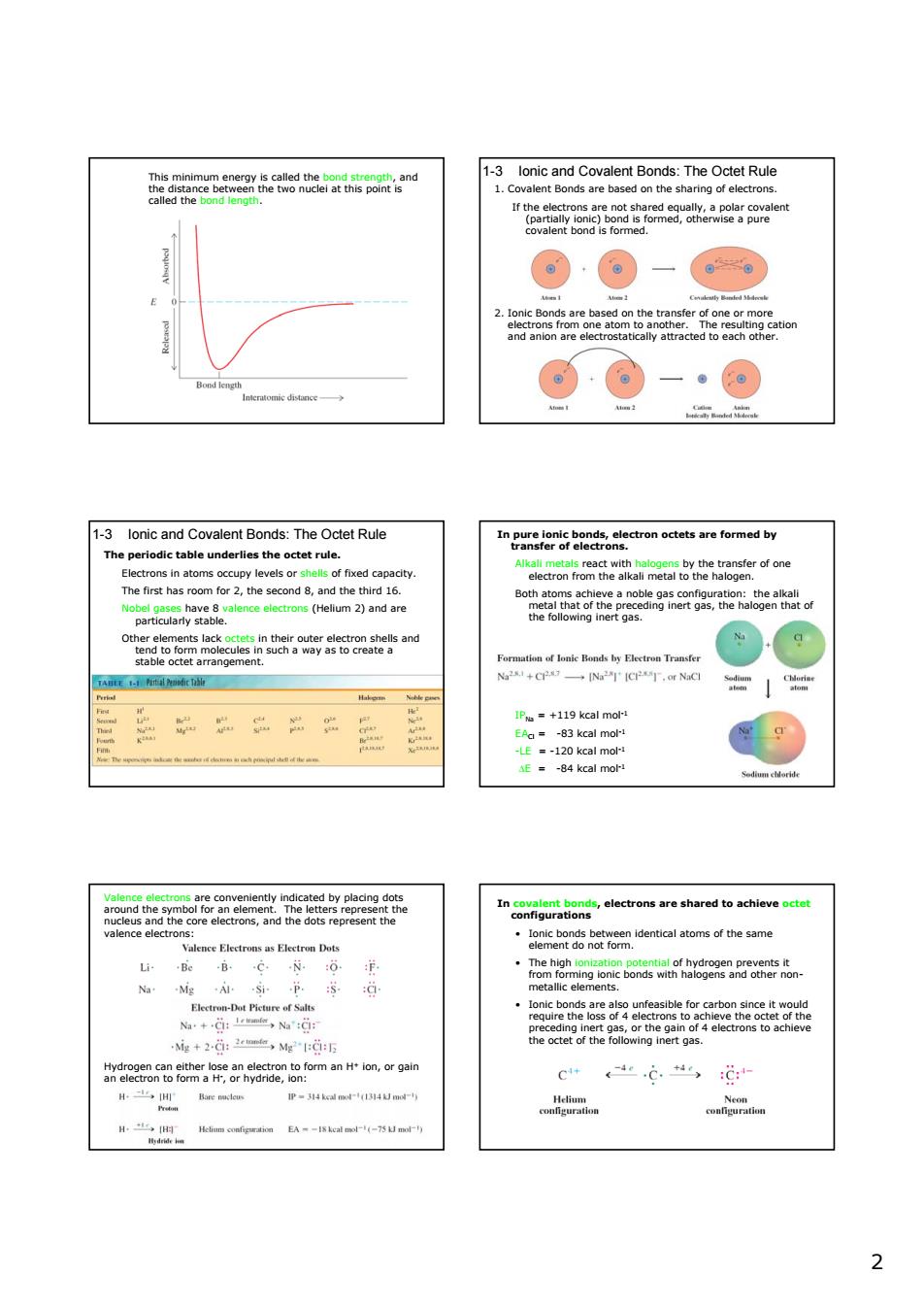正在加载图片...

e6eo “2a ⊙·⊙-。。 ⊙⊙-·⊙ 1-3 lonic and Covalent Bonds:The Octet Rule The periodic table underlies the octet rule. ce electrons (Helium 2)and are 2+一NT,wN *119 kcal mol 三 8 kcal mor sare shared to achieve a lence electro eitomof the same Li Be Na.Mg :+2:,Mg:: 2aS8常n9n n 22 This minimum energy is called the bond strength, and the distance between the two nuclei at this point is called the bond length. 1-3 Ionic and Covalent Bonds: The Octet Rule 1. Covalent Bonds are based on the sharing of electrons. If the electrons are not shared equally, a polar covalent (partially ionic) bond is formed, otherwise a pure covalent bond is formed. 2. Ionic Bonds are based on the transfer of one or more electrons from one atom to another. The resulting cation and anion are electrostatically attracted to each other. 1-3 Ionic and Covalent Bonds: The Octet Rule The periodic table underlies the octet rule. Electrons in atoms occupy levels or shells of fixed capacity. The first has room for 2, the second 8, and the third 16. Nobel gases have 8 valence electrons (Helium 2) and are particularly stable. Other elements lack octets in their outer electron shells and tend to form molecules in such a way as to create a stable octet arrangement. In pure ionic bonds, electron octets are formed by transfer of electrons. Alkali metals react with halogens by the transfer of one electron from the alkali metal to the halogen. Both atoms achieve a noble gas configuration: the alkali metal that of the preceding inert gas, the halogen that of the following inert gas. IPNa = +119 kcal mol-1 EACl = -83 kcal mol-1 -LE = -120 kcal mol-1 ΔE = -84 kcal mol-1 Valence electrons are conveniently indicated by placing dots around the symbol for an element. The letters represent the nucleus and the core electrons, and the dots represent the valence electrons: Hydrogen can either lose an electron to form an H+ ion, or gain an electron to form a H- , or hydride, ion: In covalent bonds, electrons are shared to achieve octet configurations • Ionic bonds between identical atoms of the same element do not form. • The high ionization potential of hydrogen prevents it from forming ionic bonds with halogens and other nonmetallic elements. • Ionic bonds are also unfeasible for carbon since it would require the loss of 4 electrons to achieve the octet of the preceding inert gas, or the gain of 4 electrons to achieve the octet of the following inert gas